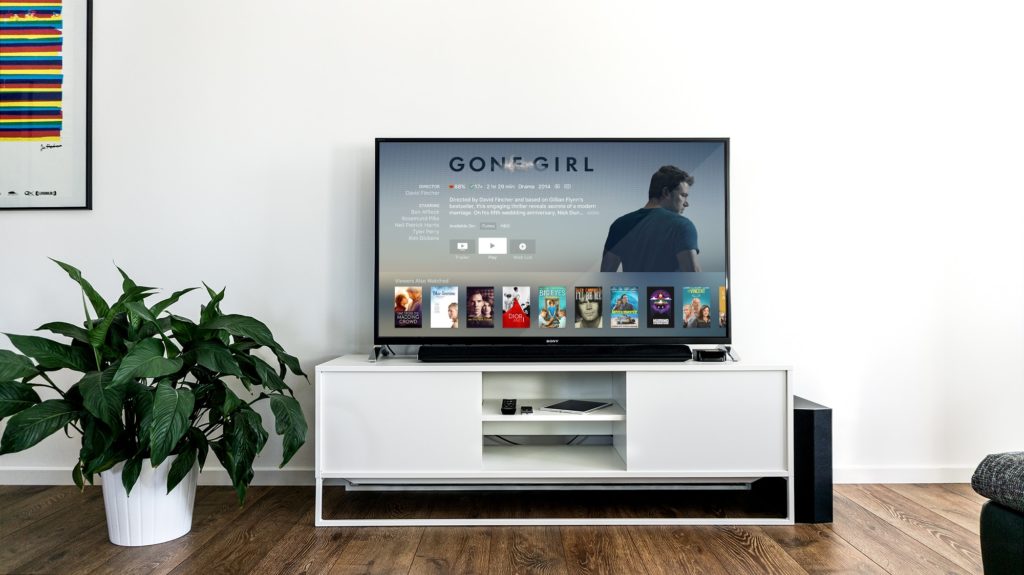
Usage of Connected TV (CTV) is booming at the moment, with its US audience predicted to grow from 180 million in 2018 to over 200 million by 2021. This huge surge in popularity is also supported by figures from Cisco, which predicts that 82% of all consumer internet IP traffic by 2021 will be video traffic. So, advertising on Connected TVs is understandably becoming a topic of major importance for businesses and marketers alike.
This is especially true considering the massive wave of ‘cord-cutting’ which is redefining how Americans watch TV. By the end of 2019, more than a third of American households won’t have a traditional television subscription, yet the number with ‘over the top’ streaming subscriptions is over 45% and growing year after year.
Considering the growing importance of advertising on Connected TVs, we felt it was time for a run-down of what value is out there and what prospective advertisers need to know about the shift to CTV.
Connected Television vs. Traditional Television
First up, it’s probably good to give a rough outline of exactly what CTV is. Connected televisions are basically any sets that are connected to the internet by any means, which could be:
- Games console (Playstation, X-Box, etc.)
- Online Media Players (Roku, Amazon Fire, Google Chromecast)
- Smart TVs
As the TV set is online, it then becomes possible for it to show what are known as ‘over the top’ (OTT) video platforms, which describes all video content that’s transmitted outside of the regular cable and satellite methods. Examples of some of the most popular OTT streaming providers are:
- Netflix
- Hulu
- Amazon Prime
- Sling TV
The terms connected TV and OTT are generally used interchangeably as, along with other devices such as laptops, tablets, and smartphones, OTT subscribers view their video content over their TV set, thus replacing the traditional TV delivery mechanism.
The Benefits of Advertising on Connected TV
Greater engagement
The data coming from digital advertising on connected TVs has been pretty outstanding, with ads showing a 97% completion rate, with the main reason being that they are unskippable. This means that video advertising can afford to be longer form without having to worry about viewers switching channels or skipping ahead as soon as they can.
The result is that the 30-second video ad dominates the scene, accounting for nearly 70% of all connected TV ads. Longer ads mean greater story-telling ability and an opportunity to connect more with your target audience.
Picking the right audience
One of the greatest advantages of digital advertising is the ability to target exactly who you want with your ads. Rather than the approach of traditional television, where shows were made to fit slots that were meant to be watched by certain demographics, with advertising on connected TVs you can be far more certain of who is actually watching your ads. OTT providers and CTV, for example, could allow slots on all crime shows or for everything watched by 50+ retirees, without wasting spend on outliers or having to compete for primetime audiences to reach a niche.
This has been heralded as the “holy grail” of TV advertising by a consortium of some of the biggest names in entertainment (including Disney, NBCUniversal and Comcast) who are establishing a standard for addressable advertising.
Greater metric control
Though there is not currently the level of feedback and data that is possible with other digital advertising, due to the lack of third-party cookies on connected TV ads, like anything online, the level of metric control still outstrips traditional television. As users will more than likely be signing on through their social media or Google accounts, there is a huge amount of consumer information that can still be gained at a basic level, even before getting into the preferred-level access likely to be offered by all OTT providers to their partners.
Consumers growing more accustomed to ads
Consumers are getting more used to the idea that piracy is bad, not just because it’s illegal but because it also affects the quality of their experience. Viewers are therefore increasingly coming around to the idea that watching ads is a fair price to pay for having high-quality TV on tap. Many consumers also find that connected TV ads are “less annoying”.
Programmatic delivery
As the market for advertising on connected TVs is still relatively young, inventory has yet to get near the levels of traditional TV. However, this is changing quickly with several ad tech companies getting in on the act, which promises to improve the availability and ease with which connected TV ads can be bought and delivered to the right target audience as part of a campaign.
At Bloom Ads we’ve built our reputation on finding the best blend of advertising for every customer and each campaign, no matter what the platform. Reach out to us today.



